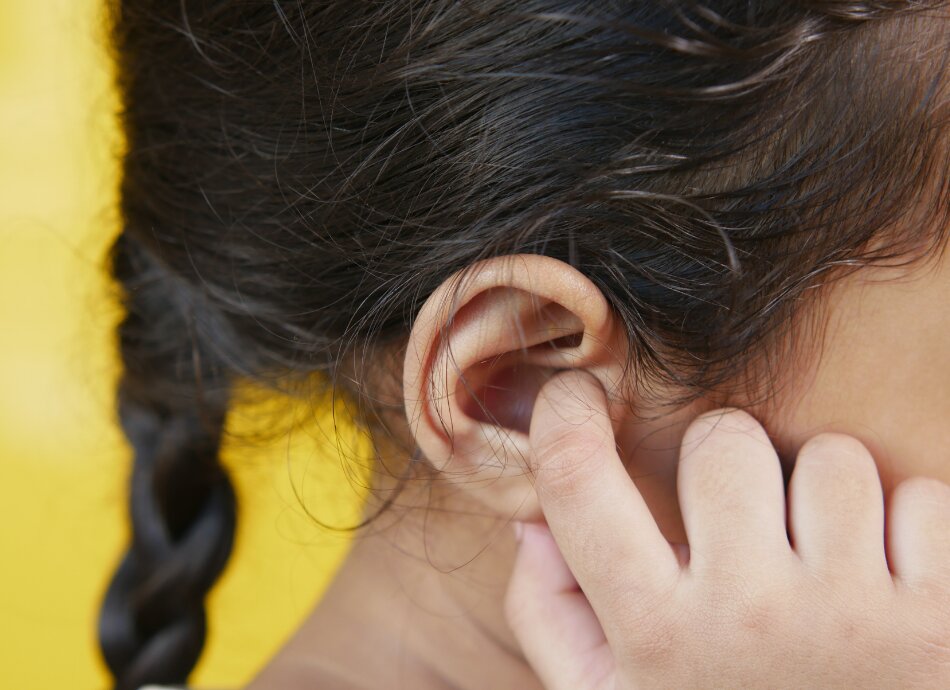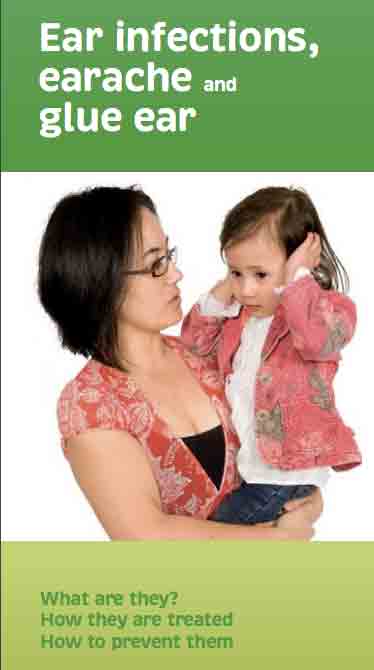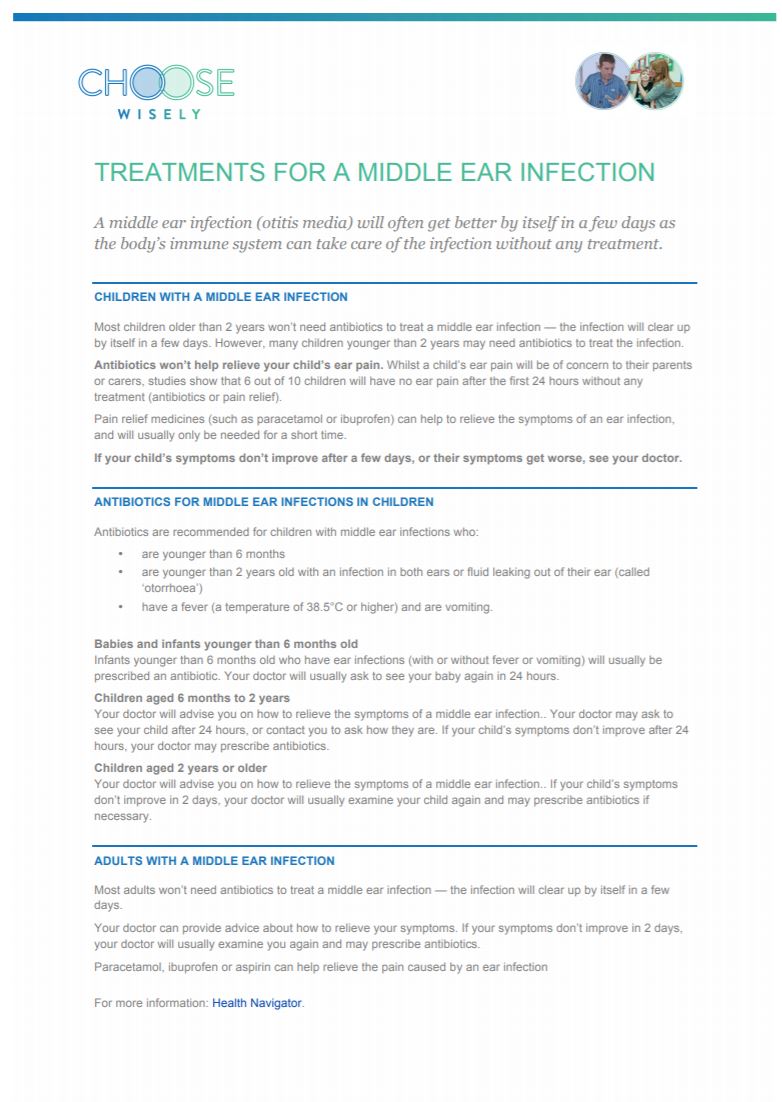Low or no data? Visit zero.govt.nz, scroll down the page then click on our logo to return to our site and browse for free.
Ear infection (middle ear) | Pokenga taringa
Key points about middle ear infections
- A middle ear infection (pokenga taringa) occurs when bacteria or viruses infect the middle ear, causing pain and discomfort. It is also known as acute otitis media.
- Ear pain and concerns about hearing are one of the most common reasons parents take their young children to the doctor.
- Ear infections are very common in young children.
- They can cause pain, and often fever.
- If you think your child has an ear infection, take them to your family doctor.
- Most children outgrow ear infections and will have perfect, undamaged ears and normal hearing.

There are 2 common types of middle ear problems:
- an ear infection (acute otitis media) – discussed on this page
- glue ear (otitis media with effusion).
You can read more detailed information about ear infections.(external link)
The pain from an ear infection comes on rapidly and doesn't last long. It usually wears off within 24 hours.
Symptoms in older children
Older children will complain of significant ear pain and may have a fever. They may also feel unwell and complain of reduced hearing in the affected ear. They may complain of problems with balance.
Symptoms in babies and younger children
In babies and younger children, sometimes the only sign of an ear infection is a fever.
Younger children may also:
- cry and become very upset, distressed, irritable and hard to settle
- have very disturbed sleep at the beginning of the infection
- become ‘clingy’ and ‘grizzly’
Burst ear drum
Occasionally, the ear drum will burst and pus will come out of the ear. See your family doctor if this happens.
Pain relief
Regular pain relief is important to help your child feel more comfortable. Paracetamol and/or ibuprofen can help reduce pain, and also lower fever which can make your child feel better. You must follow the dosage instructions on the bottle. It is dangerous to give more than the recommended dose.
Antibiotics are often not needed
Your doctor may either:
- wait to see whether the infection will clear up by itself, or
- recommend treatment with antibiotics, if your child is unwell and feverish.
Go to your doctor if you suspect your child has an ear infection
If you think your child has an ear infection, take them to your family doctor.
Take your child back to your doctor if your child doesn't improve in 24 to 48 hours
Once an ear infection is diagnosed, your child should start to improve within 24 to 48 hours. If the symptoms are no better or are getting worse, or you are worried about your child, take them back to your family doctor.
Go to your doctor again 4 to 6 weeks after the ear infection
Always take your child to your family doctor for an ear check after any ear infection, to make sure the ear fluid has gone. Go to your doctor again 4 to 6 weeks after the ear infection.
It isn't easy to prevent ear infections, but the following may help reduce the risk:
- making sure your child's environment is smoke-free
- breastfeeding your baby for at least 3 to 6 months is thought to be protective against the early development of ear infections - this may be because breastfeeding boosts the infection-fighting system (immune system)
- keeping your child's room warm and dry
- making sure your child has all their immunisations on time.
Resources
Ear infections, earache & glue ear(external link) HealthEd, NZ, 2021
Your family & antibiotics: What you need to know(external link) PHARMAC, NZ
Treatments for a middle ear infection(external link) Choosing Wisely, NZ, 2016
Virus action plan (adults)(external link) He Ako Hiringa, NZ
Virus action plan (child over 6 months)(external link) He Ako Hiringa, NZ
Continuing professional development
Common ENT infections – Bruce Arroll (21 minutes) PHARMAC seminar: Ear, nose and throat (ENT) update, 1 of 5. Common ENT infections(external link) (PHARMAC, NZ, 2019)
For more videos of the same series, visit PHARMAC seminars(external link).
Clinical updates
Otitis media – a common childhood illness(external link) Best Practice Journal, NZ, 2012
Antibiotics guide(external link) BPAC, NZ, 2017
Acute otitis media in children(external link) Patient Info Professional, UK, 2016
Acute otitis media in adults(external link) Patient Info Professional, UK, 2016
Chronic suppurative otitis media(external link) Patient Info Professional, UK, 2018
Acute otitis media(external link) The Royal Children’s Hospital Melbourne, Australia, 2018
The tympanic membrane – diagnostic picture tests(external link) BMJ Learning, UK, 2014
Down syndrome and increased risk of ear infections
Children with Down syndrome or cleft palate disorders are at much higher risk of ear infections and glue ear. They get it at a younger age and are less likely to clear it themselves. Refer early and they often need ongoing specialist review. Assessment and surgical management of otitis media with effusion in children(external link) National Institute of Healthcare Excellence, UK
Brochures

HealthEd, NZ, 2021

Choosing Wisely, NZ, 2016
Credits: Content shared between HealthInfo Canterbury, KidsHealth and Healthify He Puna Waiora as part of a National Health Content Hub Collaborative.. Healthify is brought to you by Health Navigator Charitable Trust
Page last updated:





